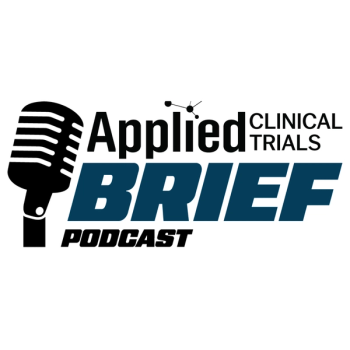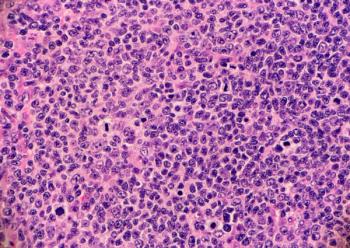Topline findings
- Wakefulness: 14 mg and 18 mg doses significantly improved MWT sleep latency.
- Daytime sleepiness: 18 mg dose significantly reduced ESS scores.
- Safety: Mostly mild-to-moderate TEAEs; no serious events reported.
- Trial completion: 95% of participants finished the double-blind phase.
- Next steps: Data support advancement to Phase III development.
Alkermes has shared positive results from its Phase II Vibrance-2 clinical trial (NCT06555783) evaluating novel alixorexton in patients with narcolepsy type 2.1
Positive outcomes across MWT and ESS scores
Alixorexton, an investigational, oral, selective orexin 2 receptor agonist, demonstrated meaningful improvements across the trial’s dual primary endpoints of change from baseline in Maintenance of Wakefulness Test (MWT) and Epworth Sleepiness Scale (ESS) at eight weeks.
In a company statement, Emmanuel Mignot, MD, PhD, Craig Reynolds Professor of Sleep Medicine in the Department of Psychiatry and Behavioral Sciences at Stanford University and the Director of the Stanford Center for Narcolepsy, said: "The alixorexton data from Vibrance-2 are the first demonstration in a large, randomized Phase II study that an orexin 2 receptor agonist can drive clinically meaningful improvements in wakefulness and excessive daytime sleepiness in patients without known orexin deficiency, with a generally well tolerated profile. These data are exciting and represent an important breakthrough in advancing a potential new treatment option for patients living with narcolepsy type 2.”
Improvements in sleep latency and daytime sleepiness
Additional data from Vibrance-2 include:
- Alixorexton improved mean sleep latency (MWT score) versus placebo at week eight across all doses; 14 mg and 18 mg doses reached statistical significance (p<0.05).
- Alixorexton improved excessive daytime sleepiness (ESS score) versus placebo at week eight across all doses; the 18 mg dose reached statistical significance (p<0.05).
Vibrance-2 safety data show:
- Alixorexton was generally well tolerated; most treatment-emergent adverse events (TEAEs) were mild to moderate, with no serious TEAEs reported.
- No clinically meaningful changes in hepatic, renal, cardiovascular, or ophthalmic parameters were observed.
- Most common TEAEs included pollakiuria, insomnia, urinary urgency, dizziness, and headache.
- About 95% of patients completed the 8-week double-blind period and entered the ongoing 5-week open-label extension.
In the statement, Craig Hopkinson, MD, chief medical officer and executive vice president of research & development at Alkermes, added: "Alixorexton is the first and only oral orexin 2 receptor agonist to demonstrate efficacy in large randomized, double-blind, multi-week Phase II studies across a range of once-daily doses in patients with narcolepsy type 1 and type 2. We are proud to lead the way in translating innovative science into a potential new treatment option for patients and look forward to moving alixorexton into Phase III development as quickly as possible."
Vibrance-2 study design
Vibrance-2 is a randomized, double-blind, dose-range-finding, placebo-controlled study.
- 93 participants were randomized to alixorexton 10 mg, 14 mg, or 18 mg once daily, or placebo, for eight weeks.
- In addition to the dual primary endpoints, the secondary endpoint is safety and tolerability, including adverse events, vital signs, and lab assessments.
- Exploratory endpoints assessed patient-reported outcomes on disease severity, fatigue, and cognition; all participants could enter a 5-week open-label extension and subsequent long-term safety study.
Earlier positive data in narcolepsy type 1
Also informing Alkermes’ push to advance alixorexton into Phase III development is an earlier readout from the Phase II Vibrance-1 trial (NCT06358950). Evaluating alixorexton in patients with narcolepsy type 1, the trial showed meaningful improvements in wakefulness, cognition, and fatigue that were sustained over six weeks.2
Presented at the 2025 World Sleep Congress in September, data from Vibrance-1 showed:
- Once-daily alixorexton significantly improved wakefulness on the MWT at week six across all doses, with dose-dependent effects; mean sleep latency increased from ~3 minutes at baseline to 24–28 minutes, achieving normative wakefulness (≥20 minutes).
- Alixorexton reduced excessive daytime sleepiness (ESS), with mean scores dropping from 18.5 at baseline to ≤10 across all doses, sustained through week 13 including the open-label extension.
- Weekly cataplexy rates improved across all doses; the 6 mg dose achieved statistical significance, with >40% of patients at 6 mg and 8 mg achieving complete resolution of cataplexy in week six.
References
1. Alkermes Announces Positive Topline Results From Vibrance-2 Phase 2 Study of Once-Daily Alixorexton in Patients With Narcolepsy Type 2. News release. Alkermes. November 12, 2025. Accessed November 12, 2025. https://www.prnewswire.com/news-releases/alkermes-announces-positive-topline-results-from-vibrance-2-phase-2-study-of-once-daily-alixorexton-in-patients-with-narcolepsy-type-2-302612355.html
2. Alkermes Presents Detailed Positive Results from Vibrance-1 Phase 2 Study of Alixorexton in Patients with Narcolepsy Type 1 at World Sleep Congress 2025. News release. Alkermes. September 8, 2025. Accessed November 12, 2025. https://www.prnewswire.com/news-releases/alkermes-presents-detailed-positive-results-from-vibrance-1-phase-2-study-of-alixorexton-in-patients-with-narcolepsy-type-1-at-world-sleep-congress-2025-302548610.html





